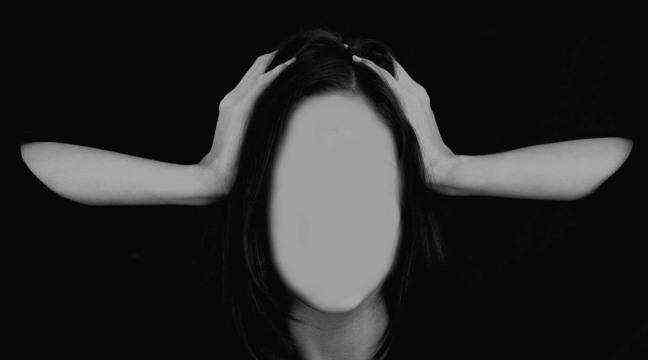“It’s like a storm that comes to devastate life,” says Joana Thibeault. This cataclysm is the migraine. From a few tough days each month, Joana suddenly went through seizures every other day. It was in 2016, following a tooth operation and drug misuse.
Since then, the young woman has had to review all these plans, fight against isolation, ignorance of the medical profession. For this, she was able to rely on the association The voice of migraine sufferers, which will organize on Saturday the
first francophone migraine summit, sponsored by the
Ministry of Health.
#migraine #migrainchronic #premiersommetfrancophonedelamigraine
September 11 at 2:30 p.m. on our website and social networks.
More informationshttps://t.co/zVRr3ukWyx pic.twitter.com/TzqUtOppj0
– The Voice of Migraineux (@voixdmigraineux) September 4, 2021
“Illness has thrown away all my activities”
The opportunity to hear a daily life upset by migraine, a term used wrongly and through and rarely considered as a disabling disease. “The crises are very trying, because of a pain often compared to a childbirth without epidural, illustrates Sabine Debremaeker, president of the association. But also because it is associated with an intolerance to noise, to light. What forces people to take refuge in a room. Basically, any change in temperature, light (goodbye screens!), Noise, hormones (two out of three patients are women) may cause a parenthesis far from normal life in the most serious cases. According to a survey *, 13% of chronic migraine sufferers can no longer work, more than 90% encounter difficulties in taking care of children, shopping… And 14.5% have been in depression.
A problem that Joana Thibeault does not hesitate to talk about. She attempted suicide a year ago. “Before, I would have said that illness ruined my life. Now that she has changed everything, nuances the young woman. I can’t do the shopping, cleaning, driving, even walking my dogs! I no longer have meals with family, parties with friends, going to the cinema. I had big weight gains, between 20 and 30 kg. Illness put all my activities in the trash. We have social and professional isolation, the resulting financial difficulties, and lack of understanding around us. Because for many, migraine rhymes with a little headache. And information such as the training of caregivers is wrong. Yet theWorld Health Organization ranked migraine as the second most disabling disease.
Therapeutic wandering
“There is a great lack of knowledge, adds Muriel Le Tutour, nurse who leads consultations with doctors at Nantes University Hospital Center. I see people who think they have migraines when they are wrong, and others who have had migraines for years without knowing it. If you can have headaches from sinusitis or a hangover, migraine is characterized by repeated attacks. According to international studies, 15 to 20% of the population suffers from it, or 10.5 million French people. Knowing that it is necessary to differentiate between episodic migraines (from one to seven days per month), severe (from eight days) and chronic (fifteen days at least, or 2% of the population).
For many of these chronic migraine patients, arriving at a diagnosis, and especially an effective treatment, is an obstacle course. “I am 59 years old, my first memories of migraine go back to my 6 years, says Sabine Debremaeker. I had a first diagnosis at 19, a first treatment at 27. ”How to explain this therapeutic wandering? “This disease has been identified for 200 years but still little known, regrets Sabine. There is no medical examination to diagnose it. And since it is mainly women who are affected, we have undoubtedly minimized. “
A hopeful treatment … but not reimbursed in France
While there is currently no drug capable of curing migraine, certain crisis treatments can limit suffering: non-steroidal anti-inflammatory drugs (NSAIDs, ibuprofen type) and triptans. “But if you take too many painkillers, there is a risk of your migraines getting worse. Likewise, all codeine and morphine derivatives should be avoided for the same reason ”, insists Jérome Mawet, neurologist at theLariboisière hospital (AP-HP). Hence the importance of follow-up with his general practitioner or a neurologist. Patients can also be relieved by DMARDs. “All are diverted from their original indication: they are antidepressants, antihypertensives and antiepileptics,” Jérome Mawet lists. But with a lot of side effects.
A novelty has nevertheless raised the hopes of some patients: monoclonal antibodies that target CGRP, a pain molecule. Two of these treatments (out of four) have been marketed in France for a few months. But not reimbursed. However,
the High Authority for Health recommends these treatments for those who suffer at least eight days of migraine per month and who have already tried at least two treatments which did not work or which were not tolerated. But apparently it is at the level of the
Economic Committee for Health Products, which establishes the price, which the file blocks. “We’ve been fighting for two years,” annoys Sabine Debremaeker. In June 2021, sixteen European countries reimbursed these treatments. “” We are in a complex situation as doctors: these are effective drugs, well tolerated, but it is complicated to mention it for patients who do not necessarily have the means to pay 250 to 270 euros per month », Adds Jérôme Mawet.
This is why this first French-speaking summit will be the occasion to insist on the urgency to reimburse this innovative treatment for approximately 45,000 severe and chronic migraine sufferers without therapeutic alternatives. “Neurologists abroad explain that 75% of migraine sufferers are relieved a few days a month and 25% completely, argues Sabine Debremaeker. With very few side effects: constipation and drowsiness. Patients can do sport again, take care of their children. “And the neurologist confirms:” I hear regularly in consultation, it’s extraordinary! “
* The Association La Voix des Migraineux surveyed 860 patients suffering from chronic migraine in 2020.

